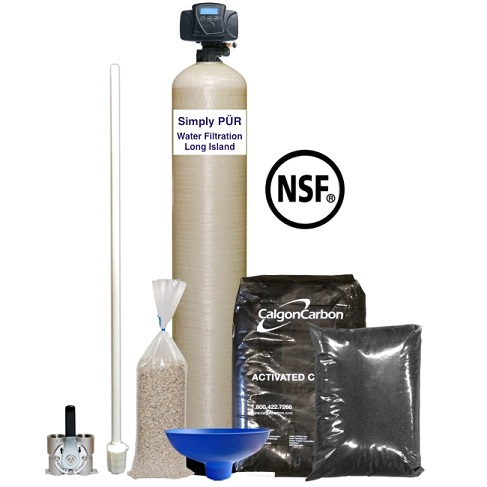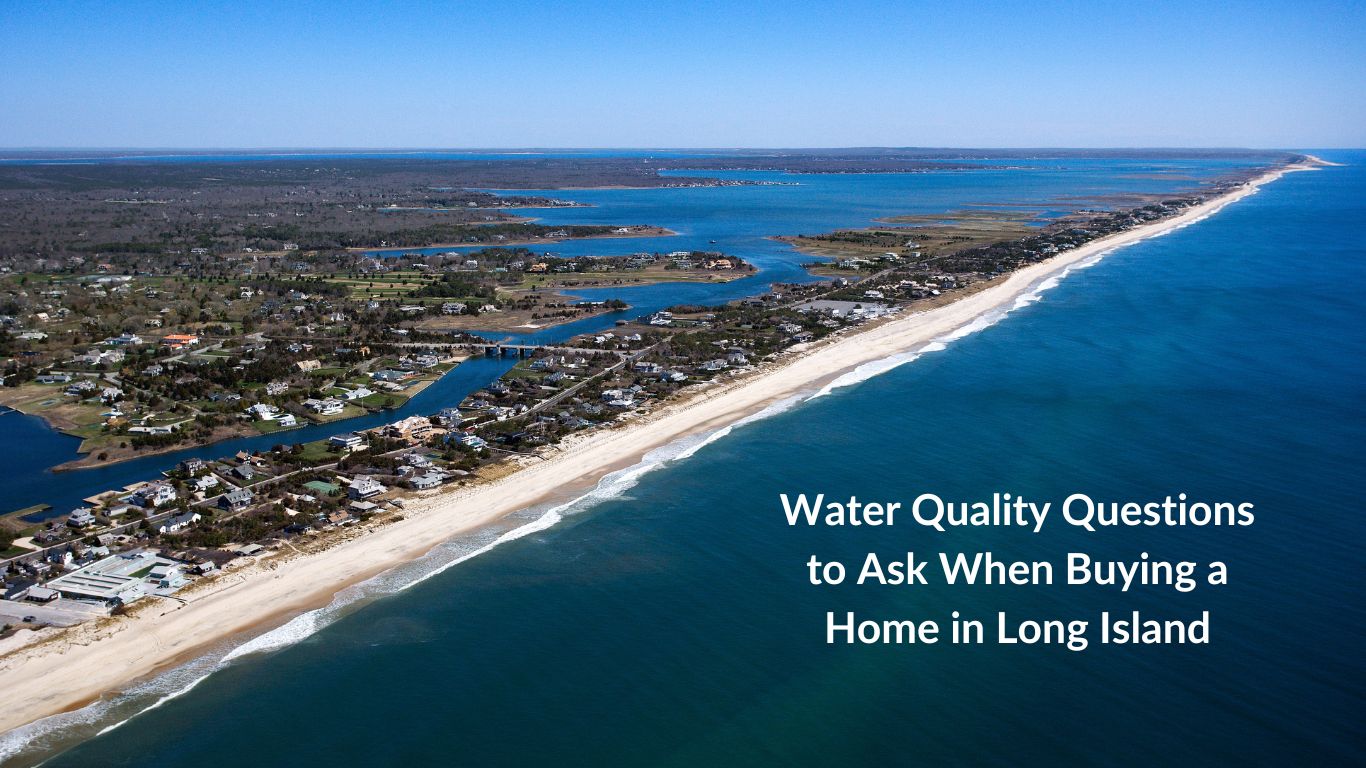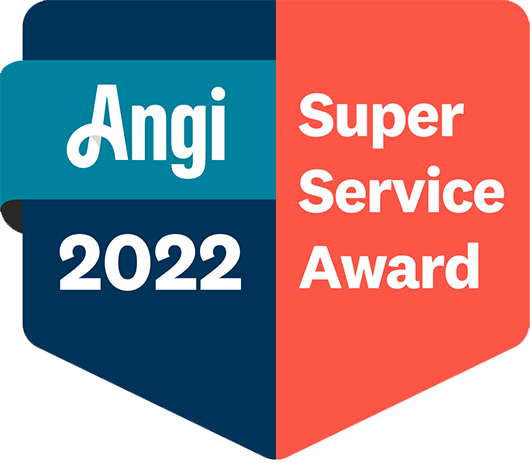When considering purchasing a home in Long Island, water quality is a crucial aspect that should not be overlooked. Ensuring that the water is safe, clean, and free from contaminants is essential for the health and well-being of you and your family. To help you navigate this important topic, here are five key questions to ask about water quality when buying a home in Long Island.
Question No. 1: Where is the home’s water sourced from?
Understanding the source of the home’s water supply is fundamental. In Long Island, water typically comes from groundwater wells. These wells draw water from the aquifers beneath the island, which are replenished by rainwater and surface water infiltration. In Long Island, water is typically sourced from one of three major aquifers: the Upper Glacial Aquifer, the Magothy Aquifer, and the Lloyd Aquifer.
The Upper Glacial Aquifer is the shallowest and most accessible, but it is also the most vulnerable to contamination from surface pollutants such as pesticides and fertilizers. The Magothy Aquifer is the largest and most heavily utilized, lying beneath the Upper Glacial Aquifer. It offers some natural filtration but still requires regular monitoring for contaminants. The Lloyd Aquifer is the deepest, providing the highest quality water due to its significant natural filtration, but it is less frequently accessed because of extraction difficulties and costs.
These aquifers provide fresh water but come with concerns such as contamination from industrial waste, agricultural runoff, and septic system leaks. Hard water, common due to high mineral levels, can cause plumbing issues, dry skin, and rough laundry. According to a U.S. Geological Survey (USGS) report, saltwater intrusion poses a significant risk, particularly for the Upper Glacial Aquifer, due to its shallow depth and extensive groundwater pumping which affects its freshwater zones.
Question No. 2: Is there lead piping leading into the home?
Lead piping is a significant concern as it can leach harmful lead into the water supply, posing serious health risks, especially for children and pregnant women. Lead pipes were commonly used in homes built before the 1980s.
In Long Island, it’s important to ask about the plumbing materials used, particularly the service line connecting the home to the main water supply. Older homes are more likely to have lead pipes, as the installation of lead pipes was banned only in 1986 under the Safe Drinking Water Act. Homes built before this year are at a higher risk of having lead service lines or fixtures.
Preliminary inventories and assessments by local water providers, such as the Suffolk County Water Authority and the Long Island Water Conference, confirm that very few homes in Nassau and Suffolk counties have lead piping. Even though the Biden administration’s proposed regulatory changes by the Environmental Protection Agency (EPA) are crucial for nationwide public health, the financial burden of this extensive project is substantial. Due to the sheer number of pipes involved, the project is expected to take decades to complete.
Question No. 3: Is the area known for having water issues?
Long Island faces challenges such as PFAS contamination, hard water, and 1,4-dioxane contamination. PFAS chemicals exceeding EPA standards affect over a million residents, while hard water, with elevated mineral content, and 1,4-dioxane contamination. Understanding these issues is crucial for making informed decisions when buying a home, and ensuring that the water supply meets safety and quality standards for your family’s well-being.
PFAS Contamination: Long Island’s drinking water contains excessive amounts of PFOA and PFOS, affecting around 570,000 people and surpassing state health regulations. These harmful chemicals highlight the need for effective water treatment solutions to ensure safe drinking water for residents.
Hard water: Hard water is a very big problem in Long Island. Long Island grapples with moderately hard-to-hard water, with an average hardness ranging from 7 to 12 grains per gallon (GPG). This elevated level of hardness is a result of the abundant mineral content, primarily calcium and magnesium, found in the local groundwater and aquifers.
1,4-Dioxane Contamination: Long Island’s water supply faces contamination from 1,4-dioxane, a persistent contaminant known to enter the environment through various pathways, including air, water, soil, and groundwater. Its resistance to degradation makes it particularly concerning for water sources. The presence of 1,4-dioxane in Long Island’s water supply stems from long-standing industrial and agricultural practices, posing a significant challenge for water quality management in the region.
Question No. 4: Does the home have a water treatment solution installed?
In general, due to the general industrial contamination of its aquifers, the water quality in Long Island is among the worst in the state. That’s where having a water treatment system installed can provide an extra layer of protection and peace of mind. Common water treatment solutions include water softeners, filtration systems, and reverse osmosis units.
As a buyer, you can ask the seller if any water treatment systems are currently installed in the home. If so, request details about the type of system, its age, maintenance records, and any warranties or service agreements. If there is no system in place, talk to us at Simply PURE Water Filtration, Inc and we’ll help you get started with a free consultation. Our water treatment solutions can significantly improve water quality by removing contaminants such as bacteria, sediment, chlorine, and heavy metals.
Question No. 5: Is there a resource near me to get my water tested?
Absolutely! Simply PURE Water Filtration, Inc. is committed to ensuring that your family drinks clean, safe water straight from your tap. We live in Long Island and we know the challenges faced by residents in Nassau and Suffolk Counties. You can request a free water quality analysis¹ or a more extensive paid test that looks for specific contaminants, ensuring that you’re aware of any potential issues and taking proactive steps to address them. Follow us for more updates on Long Island water quality and take the first step towards healthier living by requesting your water quality analysis today.
¹Water quality analysis is free with the agreement to purchase any water filtration system.
About Simply PURE Water Filtration Services
Living in and serving the Long Island community, we strive to make sure everyone has access to clean, healthy water. We have the experience, knowledge, and industry-leading technology to provide clean water solutions for water impurities, contaminants, hard water, bad tasting/odors, well water, acidity & pH regulations.
Proud members of the WQA (Water Quality Association), and the EWQA (Eastern Water Quality Association), we adhere to strict guidelines and the WQA code of ethics. As a Pentair True Blue Partner and Authorized Distributor of Pentair Products, there’s nothing comparable to the performance, and efficiency of our whole house purification systems, water softeners, neutralizers, whole-house filters, and alkaline reverse osmosis systems for drinking in the convenience of your home.


Our products are all NSF / ANSI certified, meeting the highest safety standards and quality performance. Providing our community with only the best experience of high quality water that’s Simply PURE from our family to yours!
Simply PURE utilizes accurate testing methods before and after system installation, as well as annual maintenance of all your water treatment equipment. Our Revolutionary Custom Built Water Treatment systems upon the completion of a Free In-Home Water Analysis, or an in-depth Comprehensive Water Analysis of your choice sent to our Certified Laboratory.




